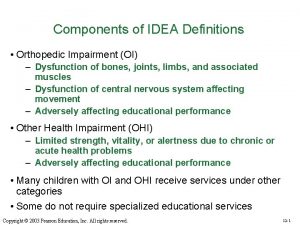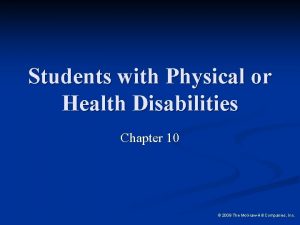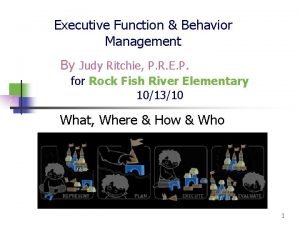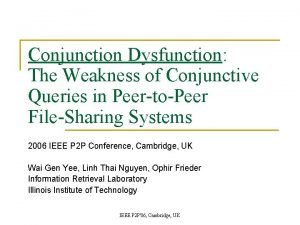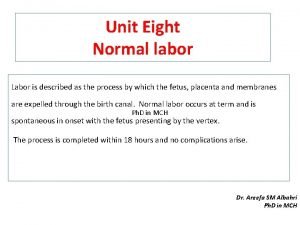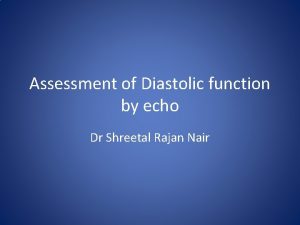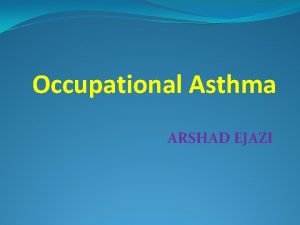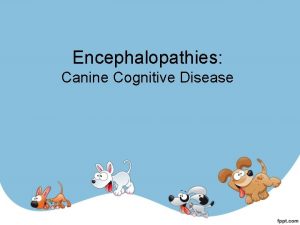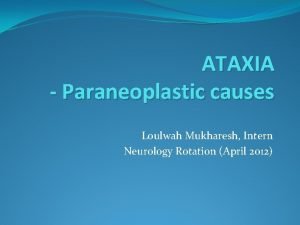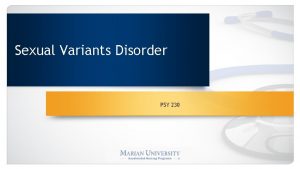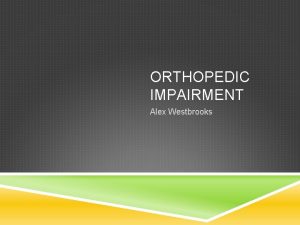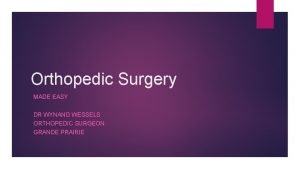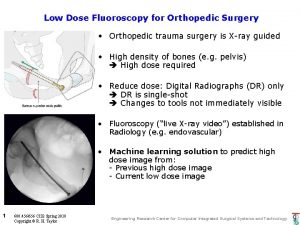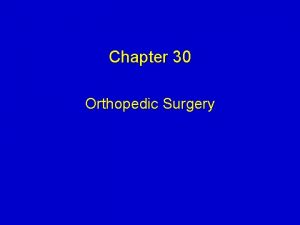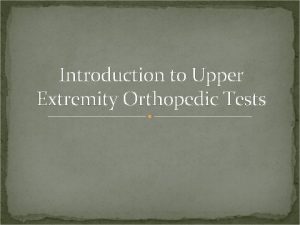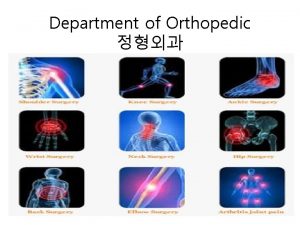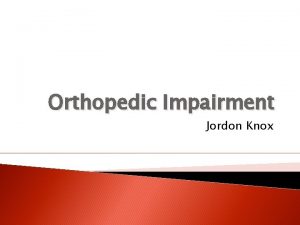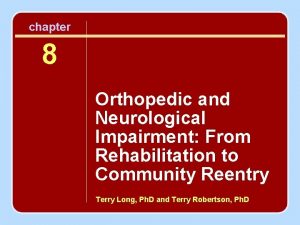Components of IDEA Definitions Orthopedic Impairment OI Dysfunction









- Slides: 9

Components of IDEA Definitions • Orthopedic Impairment (OI) – Dysfunction of bones, joints, limbs, and associated muscles – Dysfunction of central nervous system affecting movement – Adversely affecting educational performance • Other Health Impairment (OHI) – Limited strength, vitality, or alertness due to chronic or acute health problems – Adversely affecting educational performance • Many children with OI and OHI receive services under other categories • Some do not require specialized educational services Copyright © 2003 Pearson Education, Inc. All rights reserved. 12 -1

Orthopedic Impairments • Cerebral Palsy – Permanent disorder of voluntary movement and posture – Little relation between impairment and intellectual development – Classified according to muscle tone and motor movement • Spina Bifida – Congenital defect in the vertebra that enclose the spinal cord – Can result in paralysis below affected vertebra – Hydrocephalic condition common; treated with a shunt Copyright © 2003 Pearson Education, Inc. All rights reserved. 12 -2

Orthopedic Impairments • Muscular Dystrophy – Progressive weakening and degeneration of the muscles – Little relation between impairment and intellectual development • Spinal Cord Injuries – Caused by fracture, stretching, or compression of spinal cord – Car accidents, sports injuries, and violence most common causes – Result in paralysis below affected vertebra Copyright © 2003 Pearson Education, Inc. All rights reserved. 12 -3

Other Health Impairments • Seizure disorder (epilepsy) – Caused by abnormal electrical activity in the brain – Three different categories based on severity – Seizures can be controlled with medicine • Diabetes – Chronic disorder of metabolism – Body unable to breakdown sugar – Treated with insulin, diet, and exercise Copyright © 2003 Pearson Education, Inc. All rights reserved. 12 -4

Other Health Impairments • Asthma – Chronic lung disease resulting in a narrowing of airways – Leading cause of absenteeism in school • Cystic Fibrosis – Genetic disorder affecting pulmonary and digestive systems • Acquired Immunodeficiency Syndrome (AIDS) – Children afforded legal protection under Section 504 Copyright © 2003 Pearson Education, Inc. All rights reserved. 12 -5

Characteristics • Children are more different than alike – Classification based on symptoms of little use in educational planning – For no other group of exceptional learner is the continuum of educational services more relevant • Three important factors that affect educational needs – Age of onset - children with congenital or acquired impairments have different needs – Visibility - the visibility of impairment may cause some to underestimate the child’s abilities and limit opportunities Copyright © 2003 Pearson Education, Inc. All rights reserved. 12 -6

Traumatic Brain Injury Definition • an acquired injury to the brain – Resulting in total or partial functional disability – Adversely affects a child’s educational performance • TBI is the most common acquired disability in childhood Copyright © 2003 Pearson Education, Inc. All rights reserved. 12 -7

Educational Approaches for Children with OI, OHI, and TBI • Often involve the collaboration of an interdisciplinary team – Teachers – Physical, occupational, and speech therapists, – Other health care specialists (e. g. , heath care aids) • Children with physical disabilities may also need environmental modifications – Examples include, wheelchair accessible classrooms, or other assistive technology • Inclusive attitude on the part of teaches and non-disabled peers – Students should be encouraged to develop as much independence as possible Copyright © 2003 Pearson Education, Inc. All rights reserved. 12 -8

Current Issues and Future Trends • Related services in the classroom – Teachers will need to make accommodations for related services in the classroom • New and emerging technology – Myoelectric (bionic) limbs – Robotics • Animal assistance – Canine helpers in the classroom • Employment, life skills, and self-advocacy – Vocational and professional opportunities must be expanded Copyright © 2003 Pearson Education, Inc. All rights reserved. 12 -9
